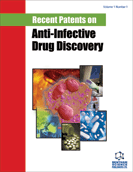Abstract
The effects of low-temperature plasma treatment on microorganisms typically related to skin diseases are studied qualitatively by the inhibition of growth and viability assays to evaluate the potential for classifying as a prospective antiseptic agent. A variety of microorganisms enveloping gram- negative and gram-positive bacteria as well as one genus of yeast and fungus each were exposed to plasma in vitro. In a comparative approach, two power supplies, both of which produce high voltage pulses yet at different temporal characteristics, are applied for the growth study. While operation with both devices led to growth inhibition of all microbes, the results indicate a superior antimicrobial efficacy for high voltage pulse lengths in the nanosecond scale. Fluorescence assays reveal the efficacy of nanosecond-pulse driven plasma in reducing germ viability. Furthermore, the technical background for patents related to low-temperature plasma technology in the field of plasma medicine is discussed.
Keywords: Antiseptic, Candida albicans, dermatology, Escherichia coli, low-temperature plasma, Microsporum canis, Pseudomonas aeruginosa, Staphylococcus aureus, plasma, microdischarges
 9
9





















